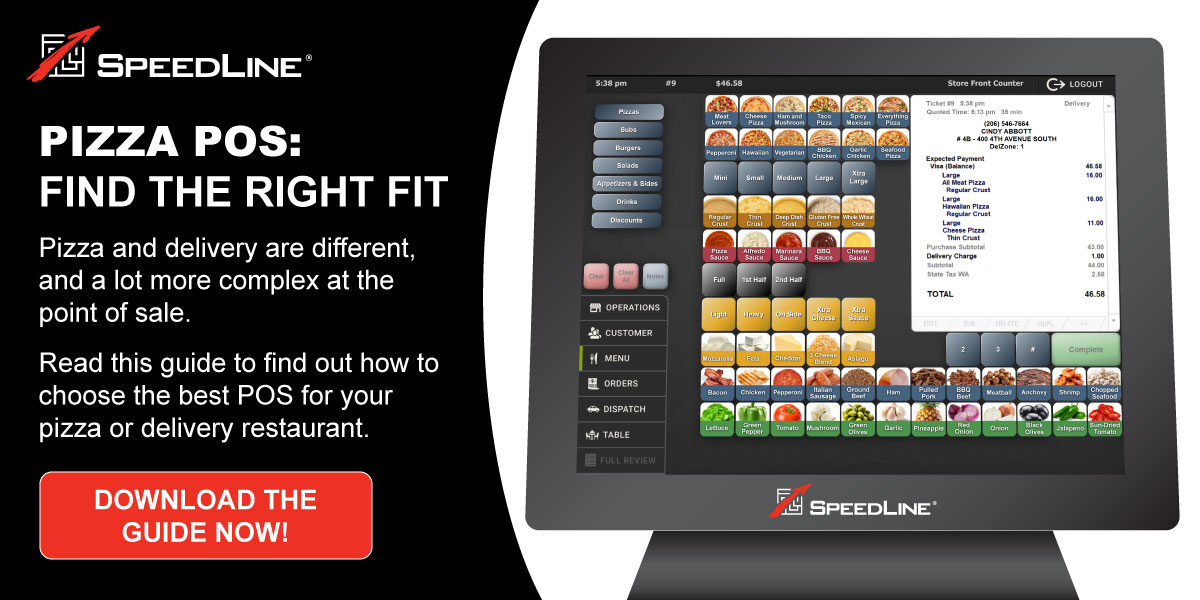Has Alexa invaded your home yet? How about Google Home, or Siri? Well, they are in the homes of your customers. While big brands have been the first to introduce voice ordering functionality for customers, it’s important for your business to evaluate how you can introduce the voice search aspect of this relatively new technology to better reach your customers.
Should You Offer Voice Ordering?
There are a few reasons only the big names, like Pizza Hut and Dominos, have begun to implement voice ordering. The first is usability and popularity. Voice ordering is still in the early adopter stage, and not all of the kinks have been worked out yet. None of the above companies are publicly reporting on what percentage of their online orders are made via voice ordering services either, so it’s unlikely to be a large percentage. Right now, for the average restaurant, voice ordering isn’t worth the costly investment.
Pizza Hut was one of the first large restaurant chains to jump on board with voice ordering, and began offering Alexa Voice Service in December 2016. Essentially, their customers can ask Alexa to read off menu items, and replace their most recent order. Dominos and Starbucks also offer voice ordering services. Starbucks uses a question and answer method, which is essentially a voice chatbot.
Optimizing for Voice Search with Google, Alexa and Siri
But you shouldn’t discount voice search just because you don’t accept voice orders. Right now, and for the near future, voice searches are very utilitarian in nature. 22% of people use voice search for local information, according to a 2016 report. Your customers are looking for Google Maps to bring up directions while they are driving, or bring up pizza places that are open late. These types of voice searches occur much more often than attempts at voice ordering.
Try now to get directions to your pizzeria with either OK Google, or Siri. Is your restaurant listed in the results? If not, below are a few ways to get it on there:
Optimize Your Website for Local Search
First and foremost, make sure to claim your Google My Business listing. This will ensure your pizzeria shows up as a local result. We covered Google My Business listings in a previous article. For any searches with “near me” in the question, Google relies on both the customer’s location, and the location of your business as laid out in your Google My Business listing.
When thinking about directions, don’t forget about Google’s competitors. Voice searches made with Siri that involve a location won’t use Google Maps, they will use Apple Maps. Apple Maps also allows you to customize your business profile, so ensure it is tagged with the right information, such as your business type (restaurant) and phone number.
Next, go through your website and optimize it for local keywords. This may be something you need to discuss with your website developer, but basically you need to ensure your website references your location throughout. There are a few technical pieces to this, such as ensuring structured data is used for your company’s contact information.
Make Ordering Simple
An easy ordering experience is a good ordering experience for your customers. We’ve covered why the online ordering process should be simple for your customers in a previous post, but here we’d like to focus on the transition from voice search to viewing your website on their smartphone.
Google favors responsive web design. That means, websites that look good and perform equally well on small screens, such as smartphones and tablets, and on large screens like monitors, perform better in search results. That favoritism extends to voice search result ranking.
Stop and consider where your customers are most likely to view your website following a voice search. If they used Google Assistant or Siri for voice search, chances are they will see the results on their smartphone. However, if they use Google Home or Alexa, what happens then?
Alexa will read out a list local pizza places (pulled from the first few Google results) and their phone numbers and web addresses. From there, it’s up to your customer and their personal preference for placing an order. Some will call, while others will enter the order online.
Rather than thinking of voice ordering and voice search as another sales channel for your restaurant, you should be thinking of it as part of your local marketing strategy. Ranking well as a restaurant result in a voice search is about being found by your local customers. Whether they are looking for your hours, directions, or your website, it’s vital your restaurant is found in voice search results.
Posted on Wed, Jul 24, 2019 @ 07:07 AM.
Updated on May 12, 2021 @ 8:24 PM PST.

